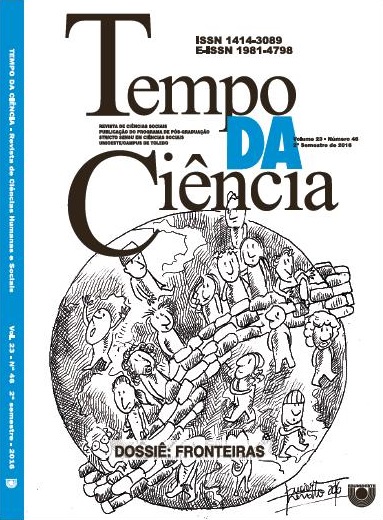The relationship Brazil-Colombia: transborders, migration and integration dynamics
DOI:
https://doi.org/10.48075/rtc.v23i46.16131Keywords:
Integración económica, Colombia, Brasil, frontera.Abstract
Brazil-Colombia relationship started in the seventies of the twentieth century despite the consolidation of the border between the two countries in 1934, after the dispute over the city of Leticia, between Colombia and Peru. This context allows us to place a question: How is the development of the migration and the relationship between Brazil and Colombia? From a historical perspective of International Relations, Geography and Political Science and from a review of literature both migration and integration have had their own dynamics. However, from the early 2000s they tend to converge, even though the integration is limited to issues of security and military control of the border. In recent years, although the interactions between the two countries have increased, especially on issues such as migration, trade and common public policy, they are still limited due to poor knowledge of society, tensions generated by foreign countries and the fact that Brazil and Colombia belong to different economic blocs: CAN and MERCOSUR.Downloads
Published
How to Cite
Issue
Section
License
Aviso de Direito Autoral Creative Commons
Política para Periódicos de Acesso Livre
Autores que publicam nesta revista concordam com os seguintes termos:
1. Autores mantém os direitos autorais e concedem à revista o direito de primeira publicação, com o trabalho simultaneamente licenciado sob a Licença Creative Commons Attribution que permite o compartilhamento do trabalho com reconhecimento da autoria e publicação inicial nesta revista.
2. Autores têm autorização para assumir contratos adicionais separadamente, para distribuição não-exclusiva da versão do trabalho publicada nesta revista (ex.: publicar em repositório institucional ou como capítulo de livro), com reconhecimento de autoria e publicação inicial nesta revista.
3. Autores têm permissão e são estimulados a publicar e distribuir seu trabalho online (ex.: em repositórios institucionais ou na sua página pessoal) a qualquer ponto antes ou durante o processo editorial, já que isso pode gerar alterações produtivas, bem como aumentar o impacto e a citação do trabalho publicado (Veja O Efeito do Acesso Livre).
Licença Creative Commons
Esta obra está licenciada com uma Licença Creative Commons Atribuição-NãoComercial-CompartilhaIgual 4.0 Internacional, o que permite compartilhar, copiar, distribuir, exibir, reproduzir, a totalidade ou partes desde que não tenha objetivo comercial e sejam citados os autores e a fonte.


